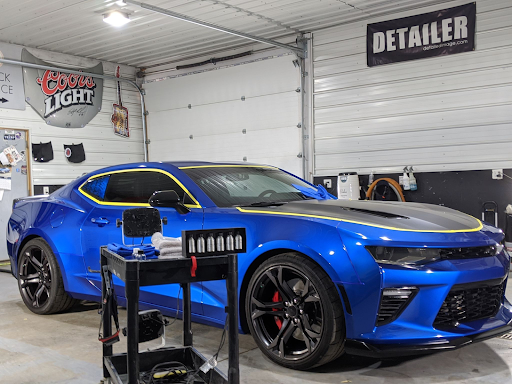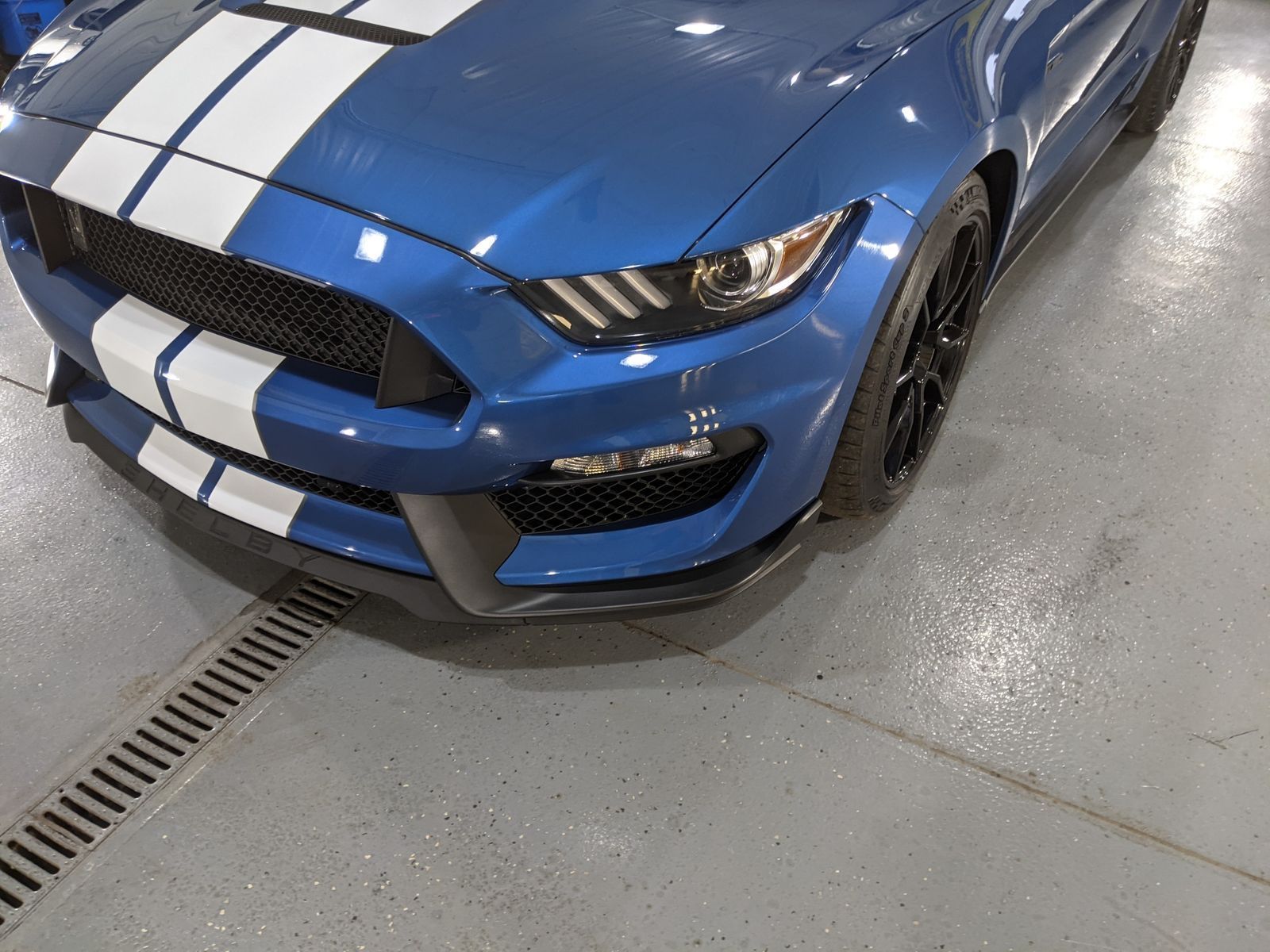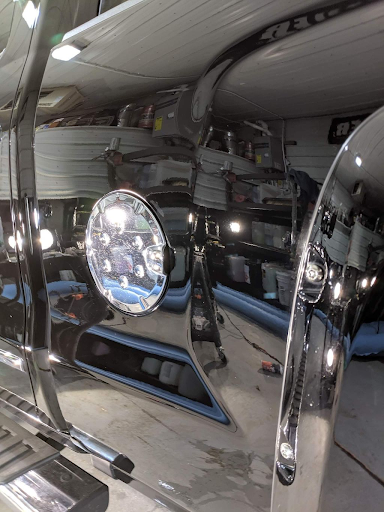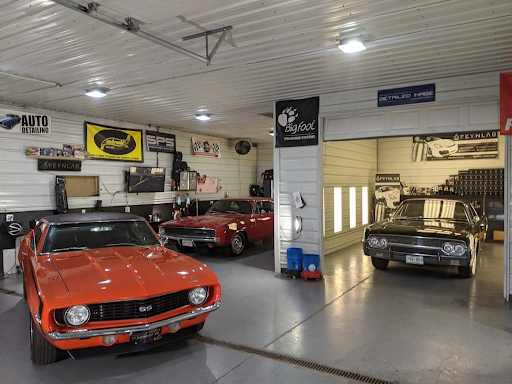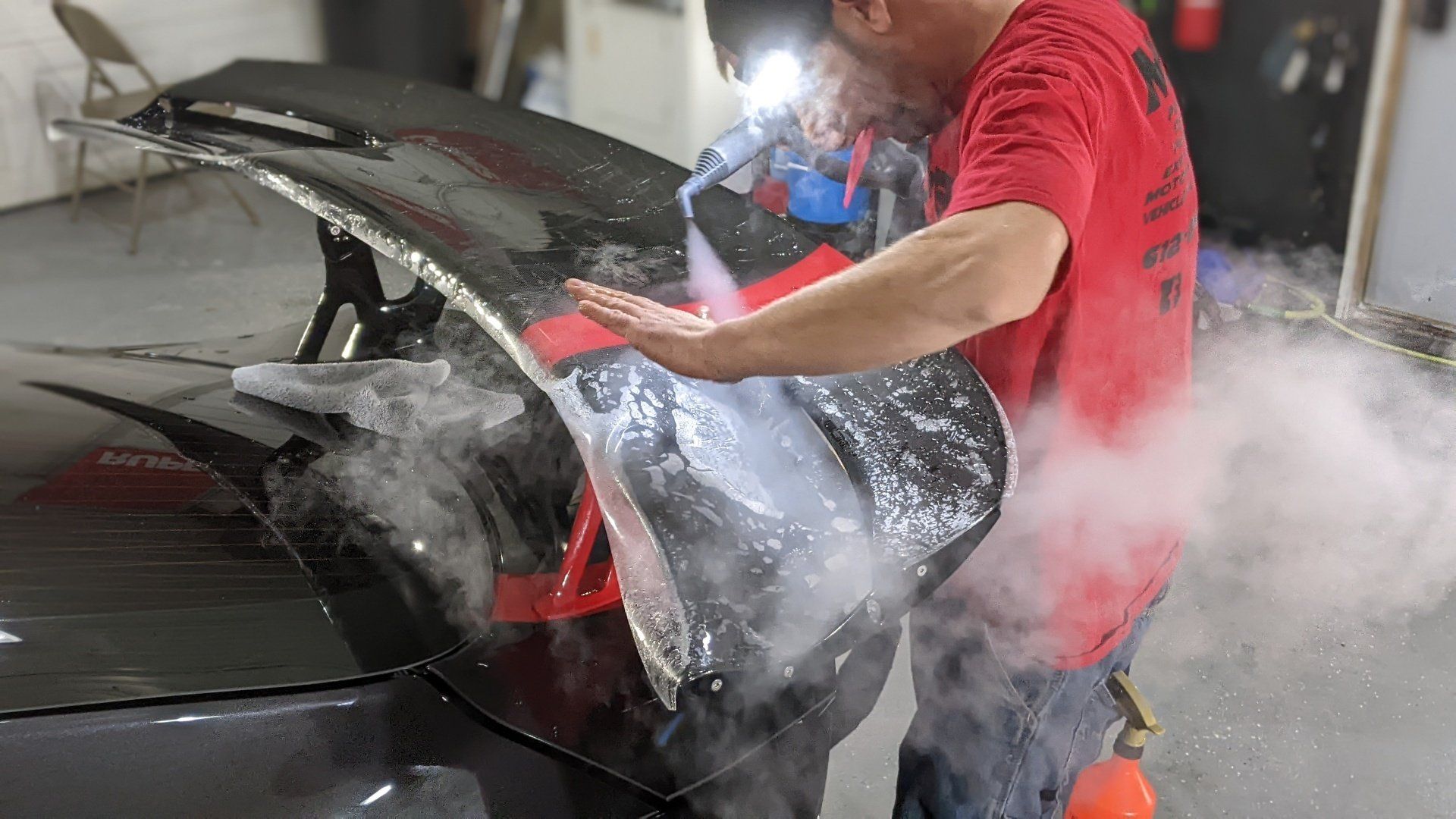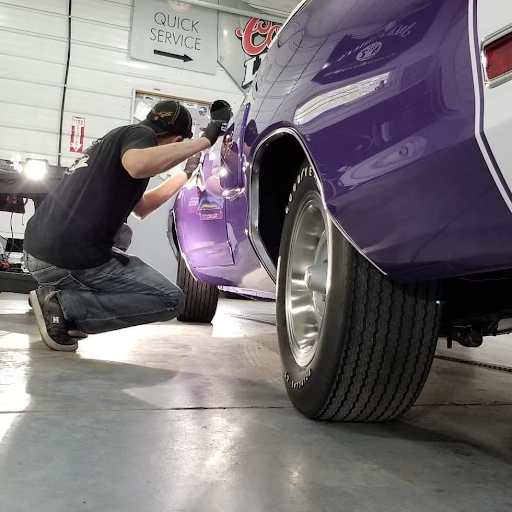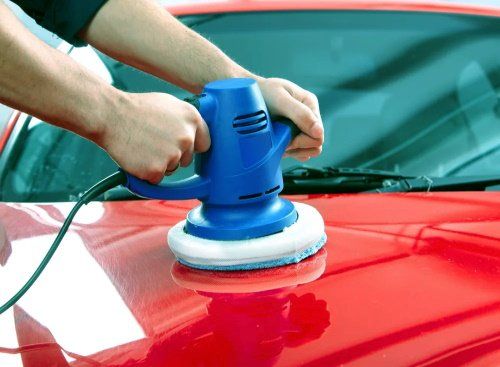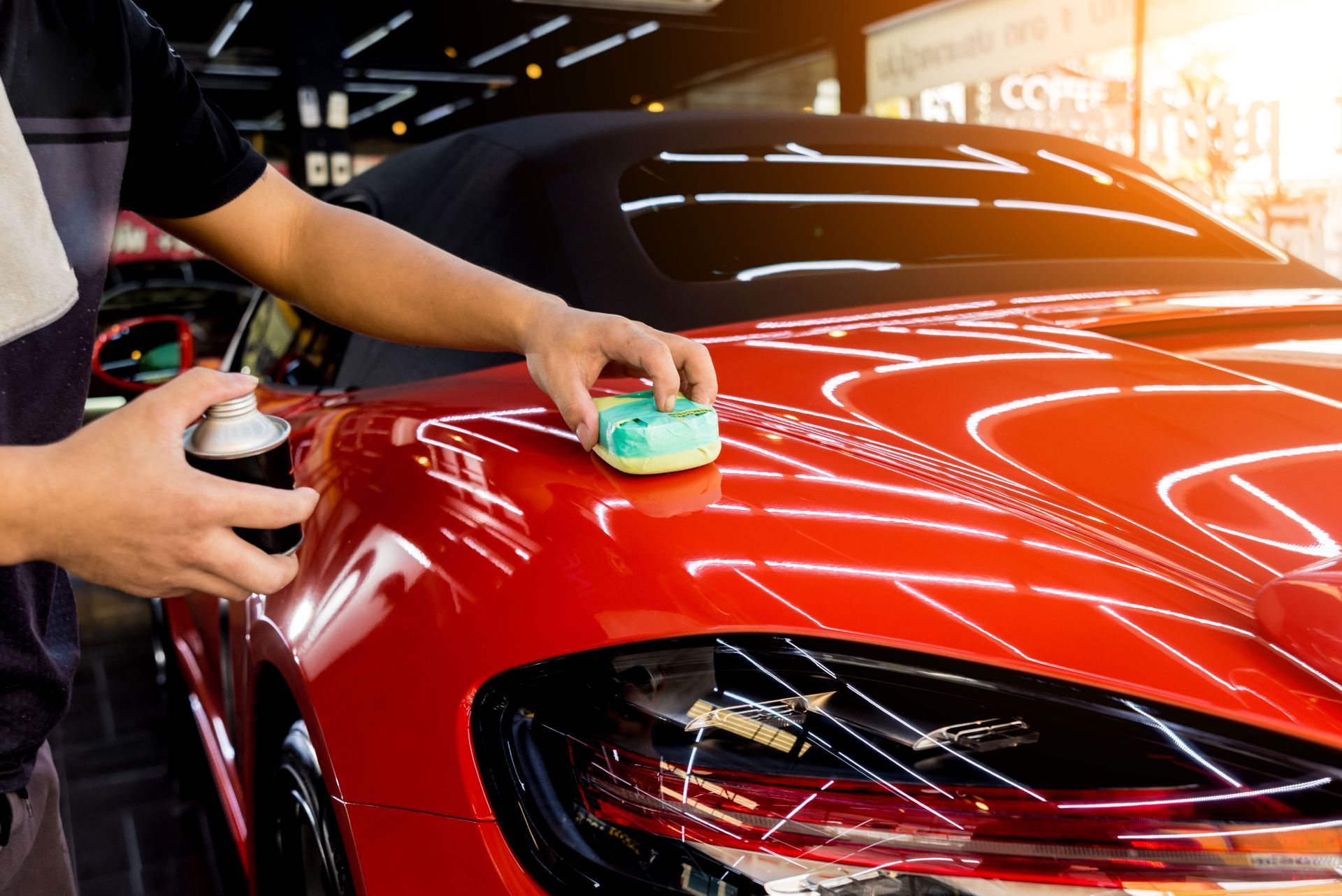Common Auto Detailing Mistakes to Avoid
In the thriving heart of Minnesota, where each vehicle is a testament to its owner's lifestyle and taste, maintaining your car's beauty isn't just a need; it's a statement. But unfortunately, many car owners fall victim to common detailing mistakes due to misconceptions and improper techniques, thus compromising their cars' much-needed luster and longevity.
Let us navigate you through these hurdles in this blog about avoiding the most common car detailing mistakes.
Your beloved vehicle deserves nothing less than perfection, so say goodbye to ineffective methods and begin your journey. Learn from the expert detailers who honed their craft in our shop, appreciating each vehicle's distinct features and value. Avoid using the wrong products or equipment, not cleaning and drying the vehicle before detailing, applying wax or polish in direct sunlight or extreme temperatures, overlooking hidden areas like door jambs and the undercarriage, and not protecting delicate surfaces like leather or chrome during cleaning.
These are prevalent issues that even expert detailers face. By avoiding these mistakes and following best practices for
car detailing, you can keep your vehicle looking like new for years to come, thereby enhancing its value.
Common Car Detailing Blunders
Car detailing, or automotive detailing, is an art that requires finesse and attention to detail. However, even the most experienced detailers can make mistakes that can impact the final outcome of their work. To ensure a successful detailing session, it's important to understand the added value of recognizing common car detailing mistakes and knowing how to avoid them.
One of the most common mistakes is not cleaning thoroughly before detailing. Many people believe that a quick wash prior to beginning the detailing process is sufficient. However, this couldn't be further from the truth. Properly preparing the vehicle by thoroughly cleaning it is crucial for achieving optimal results. In the hands of expert detailers, even this preliminary stage can substantially increase your car’s value.
Before jumping into the detailing process, it's essential to wash the exterior of the vehicle meticulously. This includes gently removing dirt, grime, and contaminants from all surfaces with a high-quality car shampoo and a microfiber wash mitt or sponge. Pay extra attention to areas such as the wheels, wheel wells, and undercarriage that are prone to collecting road debris.
This is a practice that our expert detailers follow because it increases the value and longevity of the vehicles.
Imagine you're about to detail a car with months of accumulated road grime and bird droppings on its surface. Ignoring or quickly rinsing off these contaminants will only lead to poor results when applying polishes or protective coatings. A sloppy cleaning job will leave scratches, swirl marks, or uneven application of products, significantly depreciating the vehicle’s value.
Once the exterior is clean, do not overlook cleaning the interior as well. Start by removing any trash or personal belongings, and then proceed to vacuum every nook and cranny thoroughly. Use appropriate brushes and attachments for hard-to-reach areas like air vents or between crevices. Wipe down all surfaces with cleaners designed for each material type, whether leather, plastic, or fabric upholstery. Professional detailers believe that a clean interior can significantly increase the value of a car.
By taking the time to clean your vehicle adequately before starting the actual detailing process, you are setting yourself up for success. The skilled detailers in our shop support this practice because they are aware of the benefits that a clean, well-detailed vehicle can bring to their clients. Investing in a professional car detailing service will ensure that your vehicle is always looking its best. A clean surface will not only allow for better bonding of protective products but also ensure a smoother application of polishes, which ultimately leads to a more remarkable final result. Detailing also offers the long-term benefits of preserving the vehicle's resale value and maintaining its pristine look.
Now that we understand the importance of adequate cleaning prior to detailing, let's explore another common car detailing blunder: the misuse of car care products and tools. These mistakes can be avoided by hiring a professional, but some car owners try to do it themselves.
Inadequate Cleaning Prior to Detailing
The detailing process is more than just making the car look shiny and new; it is also about restoring its condition by treating specific areas that need attention.
However, rushing into detailing without first cleaning the vehicle is a major mistake that can damage your vehicle's long-term appearance and durability.
When a car is not thoroughly cleaned prior to detailing, dirt, grime, and other contaminants can interfere with the effectiveness of the products used.
For instance, applying polishes or protective coatings over a dirty surface can lead to an uneven finish, diminished shine, or reduced durability of the protective layers.
The benefits of detailing can only be realized when cleanliness is prioritized.
Let's say you've decided to use the services of a professional to apply a sealant or wax to protect your car's paint.
If there are still remnants of dirt or old wax on the surface, these contaminants will prevent proper adhesion of the new protective layer.
This can leave patches where the wax doesn't bond correctly, resulting in an unappealing appearance and reduced longevity of the protection. Moreover, ignoring interior cleaning can also have detrimental effects on the final outcome.
Inadequate vacuuming and cleaning of interior surfaces can result in dust particles settling back onto newly detailed areas.
This can make your investment go in vain, as your freshly detailed car may end up looking dull and dusty shortly after completing the process. To avoid this blunder, take time to meticulously clean every inch of your car before diving into any detailing tasks or opting for a service.
By doing so, you'll create an optimized canvas for applying products effectively and ensuring superior results.
Misuse of Car Care Products and Tools
To achieve a clean and polished finish, car detailing necessitates the use of a variety of products and tools. However, many car owners make the mistake of misusing these products and tools, resulting in poor results or even damage to their vehicle's surfaces. To ensure an efficient and safe detailing process, it is critical to understand the proper application and usage of each product and tool.
One common mistake is using too much product during the washing or waxing process. Overloading your vehicle with excessive amounts of car shampoo, wax, or sealant can create a thick residue that is difficult to remove. Additionally, using abrasive cleaners or brushes not suitable for your vehicle's surface can cause scratches or swirl marks. A detailed understanding of the products can maximize the benefits of your investment.
To avoid these issues, read the instructions provided by the manufacturer before using any car care product. Follow the recommended dilution ratios for shampoos and other cleaning agents. Use soft microfiber towels, foam applicators, or gentle brushes designed specifically for automotive use. These tools will ensure proper cleaning without causing any damage.
When it comes to wax or sealant, for example, less is often more.
A thin layer evenly spread across the surface provides sufficient protection while allowing for easier removal later on. So, consider car detailing a thoughtful investment that fetches appreciable benefits when done correctly. Too much product use creates waste that can be difficult to clean up. In the face of such routine, it is clear that the services of professional detailers are required. Their knowledge ensures that the correct amount of product is used, and they recognize the significance of a well-executed task.
Furthermore, it is critical to choose products that are appropriate for the various surfaces of your vehicle. Specialized cleaners or conditioners may be required for various materials, such as plastic trim, leather upholstery, or chrome accents. These surfaces can be discolored or worn out faster than normal if you use an all-purpose cleaner on them.
Schedule an appointment with a
professional detailer if you need help deciding which products will work best for your vehicle. With that being said, let's move on to another common mistake in car detailing: harmful waxing and buffing techniques.
Harmful Waxing & Buffing Techniques
Waxing and buffing are essential steps in car detailing that help restore gloss and protect the vehicle's paintwork. However, using improper techniques during these processes can result in unintended consequences such as dull finishes, swirl marks, or even burns on the paint surface. To achieve a pristine shine without causing any harm, it is vital to understand and apply the correct waxing and buffing techniques.
One common mistake is applying too much pressure while buffing. Excessive pressure can create friction and heat, which can burn the paint and leave permanent damage. It's crucial to let the machine or hand applicator do the work with minimal downward force. A light touch is often sufficient to evenly distribute the product and achieve a smooth finish.
When using a machine buffer, for example, start with the lowest speed setting and gradually increase it if necessary. Allow the buffer pad to glide smoothly across the surface without putting too much pressure on it. Controlled buffer movement reduces swirl marks and heat buildup. Another mistake to avoid is not removing excess product before it dries or cures completely.
Wax or polish residue left sitting on the paint surface can lead to streaks and a hazy appearance. Always follow the product instructions for proper curing times, and use clean towels or microfiber cloths to gently remove any excess residue. Avoiding these harmful waxing and buffing techniques will help you achieve professional-looking results while ensuring that your car's paint remains unharmed.
Unchecked Streaks & Debris
One common mistake that car owners often make when detailing their vehicles is leaving unchecked streaks and debris on the surfaces. While it may seem like a minor issue, these streaks can significantly diminish the overall appearance of your vehicle and compromise the results of your hard work.
Let's say you've just finished washing your car and are eager to enjoy the fruits of your labor. However, upon closer inspection, you notice streaks and water spots on the windows and exterior panels.
Insufficient rinsing or improper drying techniques may be to blame for these unsightly marks.
Imagine you're driving down the road on a sunny day in downtown Minneapolis with streaky windows obstructing your view. Not only will this impair your visibility, but it can also be dangerous for you and other drivers on the road.
To avoid unchecked streaks and debris, consider investing in quality microfiber towels or an air compressor to effectively dry your vehicle after washing. Using the right drying techniques will help you avoid water spots and unsightly streaks on painted panels, metal surfaces, and glass windows.
By avoiding these common errors with the assistance of professionals, your car can radiate an attractive shine that is sure to impress anyone who sees it!
When it comes to debris, it's crucial not to overlook any hidden nooks and crannies where dirt and dust tend to accumulate. Effective solutions, such as high-quality products, are invaluable to tackling these hidden spots.
Neglecting to remove debris from these areas can lead to long-term damage and deterioration of various components of your vehicle. Cleaning product reviews can often provide great recommendations to tackle these issues.
When detailing a car, it is critical to pay attention to important cleaning areas that are frequently overlooked. It is easy to focus solely on the exterior paintwork while ignoring other important components like the engine bay, interior compartments, and even the undercarriage. Using the right cleaning products can significantly extend the life of your vehicle's features.
Overlooking Important Cleaning Areas
Neglecting the engine bay, for example, may result in a buildup of dirt, grease, and grime that can impair performance and potentially damage the delicate components. This can result in costly repairs later on. Reading product reviews and looking for cleaning solutions designed specifically for this area can help to avoid such problems.
Moreover, overlooking interior compartments like the trunk, glovebox, and cup holders can result in a buildup of dust, crumbs, and debris over time. These neglected areas not only affect the cleanliness of your vehicle but can also lead to unpleasant odors and attract pests. Again, selecting appropriate cleaning products based on reviews can result in effective solutions for such compartments.
Even the undercarriage of your car requires attention; it's often exposed to road debris, salt during the winter months, and environmental contaminants. Overlooking this area can contribute to rust formation and compromise the structural integrity of your vehicle. According to customer feedback, it is beneficial to invest in high-rated cleaning products for undercarriage care to avoid such problems. The key to avoiding these mistakes is to detail your car in a systematic manner.
Create a checklist or mental note to ensure that all important cleaning areas are thoroughly inspected, cleaned, and maintained with suitable solutions and cleaning products. Prioritize regular maintenance of often overlooked areas to keep your car in tip-top shape. Imagine you have guests riding in your car who accidentally open the glovebox, only to be met with a cloud of dust and crumbs flying out. It's embarrassing and gives off the impression of neglect.
Regular cleaning with the proper products can help avoid such awkward situations. Taking care of these often overlooked areas not only ensures a clean and well-maintained car but also enhances your overall driving experience. It's the small details that make a difference in creating a positive impression, both for yourself and others who may ride in your car.
Customer reviews can often provide useful tips on finding the best cleaning solutions. Car care is not just about making the vehicle look clean and shiny; it also involves protecting its surfaces from damage. One common mistake that car owners often make is neglecting to remove debris from surfaces before starting the detailing process.
This can have adverse effects on the paintwork and other exterior parts of the vehicle. Therefore, using the proper cleaning products for this task is essential.
- In a 2019 survey by the International Carwash Association, about 72% of American car owners admitted to using unsafe products or methods when detailing their vehicles at home.
- According to the same study, roughly half of self-detailing car owners were found to be over-waxing or improperly applying wax to their vehicles, resulting in an unsightly finish and potentially trapping contaminants against the paint surface.
Neglecting Debris Removal From Surfaces
When debris such as dirt, dust, leaves, or loose gravel is left on the vehicle's surface during the detailing process, it can act as abrasive particles. While washing or polishing the car, these particles can scratch and swirl the paint, leaving unsightly marks that are difficult to remove.
Additionally, when these particles accumulate over time, they can even cause more significant damage by corroding the paintwork. It's crucial to use the right cleaning products to get rid of this debris, according to product reviews.
Regardless of the available solutions and reviews, a car owner chooses to detail their vehicle without properly removing debris or using the appropriate cleaning products. Imagine a car owner detailing their vehicle without first cleaning it.
They begin by washing the car with a mitt or sponge, but unknowingly rub dirt particles into the paint.
As the process continues, those particles create micro-scratches and swirls all over the surface, detracting from the overall appearance of the car. To avoid making this error and to ensure proper debris removal,
1. Inspect and Pre-Clean: Before starting the detailing process, inspect your vehicle's surfaces for any visible debris like mud or pebbles. Use a hose or pressurized water to pre-clean the exterior and loosen any stubborn dirt.
2. Use Appropriate Tools: Invest in high-quality cleaning tools such as microfiber towels, brushes with soft bristles, and air blowers specifically designed for automotive surfaces. These tools will help you effectively remove debris without causing any damage.
3. Pay Attention to Hard-to-Reach Areas: Debris tends to accumulate in hard-to-reach areas like wheel wells, grilles, and crevices. Use appropriate tools (such as detailing brushes) to clean these areas thoroughly and ensure that no debris is left behind.
By properly removing debris from the surfaces before starting the car detailing process, you can prevent unnecessary damage to the paintwork and maintain the overall appearance of your vehicle.
Unintentionally Damaging the Paintwork
When it comes to car detailing, one of the primary goals is to improve the appearance of the paintwork. However, many Minneapolis car owners unintentionally harm the very thing they are attempting to improve. When it comes to protecting the paint on your vehicle, there are several common mistakes to avoid. One such mistake is using improper washing techniques or tools that can cause scratches or swirl marks on the paint surface.
For example, using a regular household sponge or abrasive materials like old towels can abrasively rub against the paint, leading to fine scratches. Similarly, using aggressive scrubbing motions or dirty cloths can also contribute to unintentional damage.
Another mistake is neglecting to use proper lubrication during washing and drying. When washing or drying the car's exterior, it's crucial to use plenty of lubrication in the form of a high-quality car wash shampoo or lubricating detailer spray. This creates a slippery barrier between the wash mitt or drying towel and the paint surface, minimizing friction and reducing the risk of scratching.
Imagine a car owner using a dirty sponge to wash their car. They use pressure while scrubbing in circular motions, creating swirl marks all over the paintwork unknowingly. The end result is an unappealing finish that detracts from the overall appeal of their vehicle.
To avoid unintentionally damaging your car's paintwork:
- Invest in Quality Cleaning Tools: Use soft microfiber wash mitts or towels designed for automotive use. These gentle tools will reduce friction and minimize the risk of scratching.
- Follow Proper Washing Techniques: Use the two-bucket method, with one bucket for soapy water and another for rinsing. This keeps dirt and debris from contaminating your wash mitt.
- Use Proper Drying Techniques: Pat the vehicle dry with a clean, soft microfiber towel instead of rubbing or dragging it across the surface. Again, using gentle motions will help avoid scratches or swirl marks.
By paying attention to proper washing techniques and using the right tools, you can prevent unintended damage to your car's paintwork and maintain its pristine appearance.
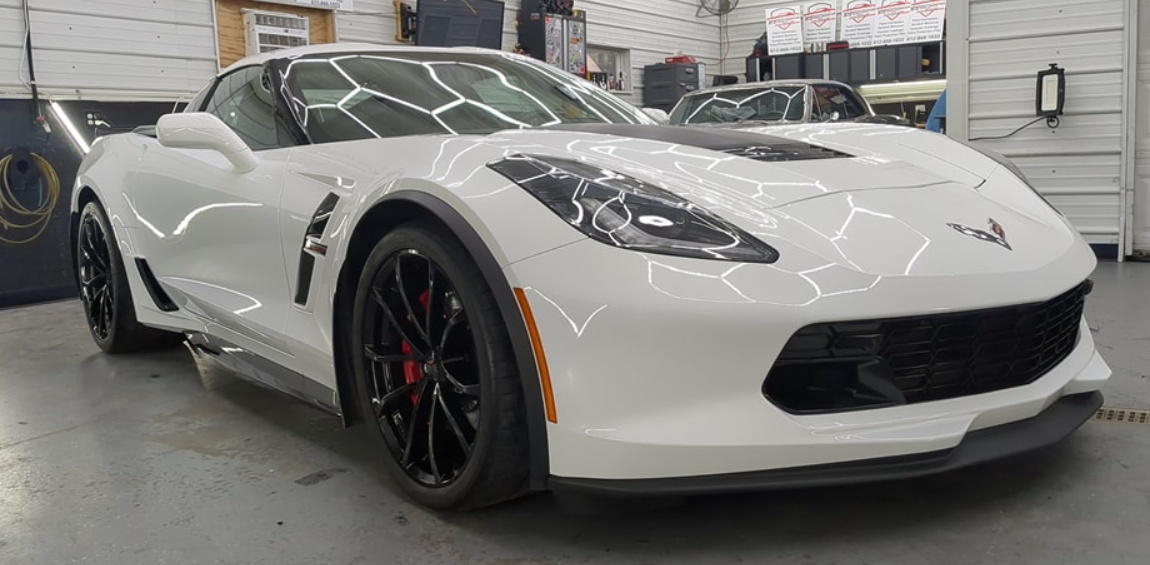
Say Goodbye to Common Mistakes With Premium Auto Detailing in Minneapolis, Minnesota
Perfect car detailing results require refinement and precision, and even seasoned professionals can make costly mistakes during the process. Failure to conduct a thorough pre-wash check may result in omitting sensitive areas, potentially causing harm. Incorrect use of microfiber towels can cause swirl marks, lowering the final sheen, and failing to choose pH-balanced cleaning solutions can cause paintwork and trim damage. In addition, failing to use appropriate drying processes can result in unsightly wet marks.
Understanding these nuances ensures a smooth detailing experience and a perfectly polished result. Here at M&B Paint Correction and Auto Reconditioning, we specialize in making cars look like new again. We take a very thorough approach, so you will not make any of the common mistakes that crop up during the detailing process.
Say goodbye to the unsightly swirl marks that result from using the wrong techniques. Embrace the brilliance of our pH-balanced cleaning agents, which protect your paintwork and trim, and learn the art of precise microfiber towel usage, which leaves your car gleaming without a trace. Give us a call today to learn more about our
premium car detailing and to book your next appointment!

